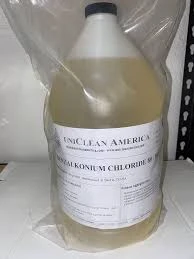polyacrylamide function
The Functions and Applications of Polyacrylamide
Polyacrylamide (PAM) is a versatile polymer that has established itself as an essential material in various industries due to its unique physical and chemical properties. Composed of acrylamide monomers, PAM is typically used in a variety of forms, including powders, gels, and solutions, each tailored to specific applications. Its multifunctional capabilities make it invaluable in areas such as water treatment, agriculture, and biomedicine.
Water Treatment
One of the most significant applications of polyacrylamide is in water treatment processes. PAM acts as a flocculant, which means it aids in the agglomeration of particles suspended in water, making it easier to separate them from the liquid. This function is particularly crucial in municipal and industrial wastewater treatment, where it helps remove contaminants efficiently. By enhancing sedimentation rates, PAM minimizes the reliance on mechanical processes, reducing both energy consumption and operational costs. Moreover, it can improve the quality of treated water, ensuring it meets health and environmental standards.
Agriculture
In agriculture, polyacrylamide serves as a soil conditioner. It enhances water retention properties, allowing soil to hold moisture more effectively. This characteristic is particularly beneficial in arid regions where water scarcity is a pressing issue. By improving soil structure, PAM helps in reducing erosion and increasing crop yield by ensuring that water and nutrients are available for longer periods. It also promotes the health of the soil microbiome, fostering a more sustainable agricultural practice. As a result, farmers can achieve better outputs while minimizing water usage, which is critical in the face of climate change.
polyacrylamide function

Biomedicine
The biomedical field has also embraced polyacrylamide for various applications such as drug delivery, tissue engineering, and as a component of gels used in electrophoresis. PAM hydrogels, for example, can encapsulate therapeutic agents and release them in a controlled manner, enhancing the effectiveness of treatments. Furthermore, the biocompatibility of polyacrylamide makes it suitable for use in medical devices and implants, where it can support cellular growth and tissue assembly. Its versatility allows researchers and clinicians to create custom solutions tailored to specific medical needs.
Environmental Concerns
Despite its many benefits, the use of polyacrylamide is not without concerns. The primary issue revolves around its potential toxicity, particularly due to the presence of residual acrylamide, which is classified as a potential neurotoxin and carcinogen. Therefore, regulations and guidelines are essential to ensure that PAM is used safely and responsibly in various applications. Manufacturers and researchers are also exploring alternatives and modifications to minimize these risks.
Conclusion
In conclusion, polyacrylamide is a multifunctional polymer with significant implications across different industries, particularly in water treatment, agriculture, and biomedicine. Its ability to enhance various processes while addressing environmental issues underscores its importance in contemporary applications. As research continues and technology evolves, PAM's role is likely to expand, continually providing innovative solutions to meet the challenges of the future.
-
Water Treatment with Flocculant Water TreatmentNewsJun.12,2025
-
Polymaleic AnhydrideNewsJun.12,2025
-
Polyaspartic AcidNewsJun.12,2025
-
Enhance Industrial Processes with IsothiazolinonesNewsJun.12,2025
-
Enhance Industrial Processes with PBTCA SolutionsNewsJun.12,2025
-
Dodecyldimethylbenzylammonium Chloride SolutionsNewsJun.12,2025





